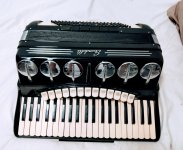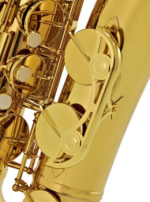KiwiSqueezer
Active member
(Not a 'How do I...?' post... This is just for the interest of any engineers lurking here.)
I'm getting deeper into the restoration of an old Scandalli 'wreck' (one of the models with six mute flaps). I'm more at home with precision engineering, and the restoration of machine tools, so restoration of an accordion or two is a journey into unfamiliar territory. I was surprised to discover that the Scandalli's treble switch mechanism contains fixings with 1/8 inch Whitworth threads. By the 50s, this was a more-or-less obsolete thread standard in its country of origin (UK), so what was it doing in an Italian accordion? I thought Italy was metric by then. There are metric standard fixings elsewhere in the box. And others I have yet to identify. Very strange...
I'm getting deeper into the restoration of an old Scandalli 'wreck' (one of the models with six mute flaps). I'm more at home with precision engineering, and the restoration of machine tools, so restoration of an accordion or two is a journey into unfamiliar territory. I was surprised to discover that the Scandalli's treble switch mechanism contains fixings with 1/8 inch Whitworth threads. By the 50s, this was a more-or-less obsolete thread standard in its country of origin (UK), so what was it doing in an Italian accordion? I thought Italy was metric by then. There are metric standard fixings elsewhere in the box. And others I have yet to identify. Very strange...



